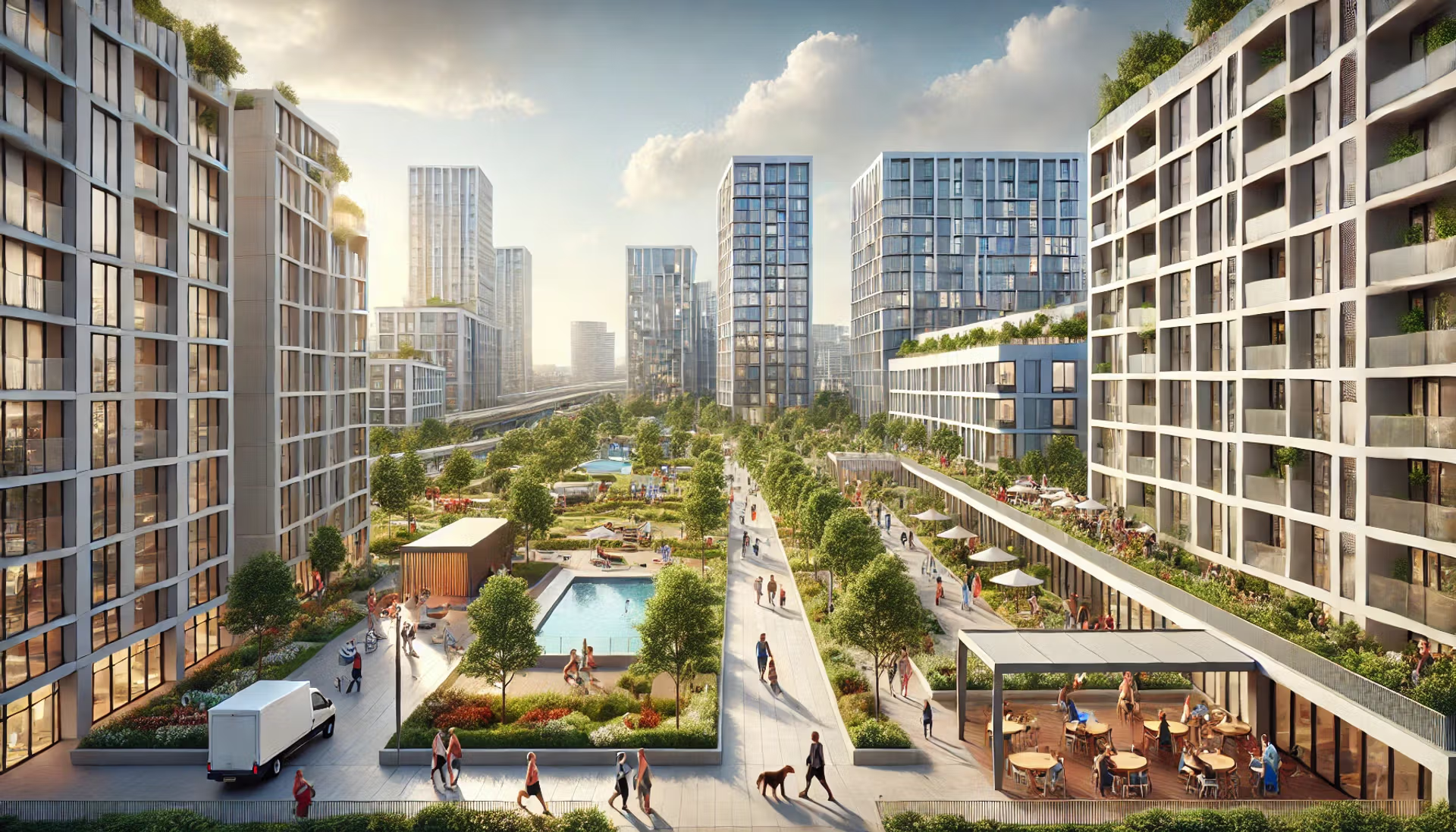The housing crisis is a pressing issue in many parts of the world, characterized by soaring prices, limited availability, and increasing homelessness. As policymakers and developers search for solutions, purpose-built rentals (PBRs) have emerged as a promising option. Can PBRs effectively address the housing crisis? Exploring their benefits, challenges, and potential as a sustainable housing solution.I had a lot of data to compile, so bullets today!
Purpose-Built Rentals
Purpose-built rentals are residential buildings designed and constructed specifically for rental purposes, unlike converted condominiums or single-family homes. PBRs typically feature amenities and layouts that cater to long-term renters, offering a different experience from traditional rental properties. Historically, PBRs were common in the mid-20th century, but their popularity waned as homeownership became more attainable.
Recently, however, they have seen a resurgence as a viable housing solution.
The Housing Crisis: Key Factors
Several factors contribute to the current housing crisis:
- Rising Housing Costs: Housing prices have outpaced income growth, making homeownership increasingly unattainable for many.
- Population Growth and Urbanization: Growing urban populations intensify demand for housing, driving up prices and reducing availability.
- Supply and Demand Imbalance: New housing construction has not kept pace with demand, exacerbating shortages.
- Regulatory and Zoning Challenges: Strict zoning laws and lengthy approval processes hinder the development of new housing projects.
Potential Benefits of Purpose-Built Rentals
PBRs offer several advantages that could help mitigate the housing crisis:
- Increased Housing Supply: PBRs add to the housing stock, helping to alleviate shortages.
- Stability and Security for Tenants: Long-term rental contracts and professional management provide stability and security for tenants.
- Design and Amenities: PBRs are designed with renters in mind, offering amenities like communal spaces, fitness centers, and more.
- Better Maintenance and Management: Professional property management ensures better upkeep and responsiveness to tenant needs.
Challenges and Criticisms of Purpose-Built Rentals
Despite their benefits, PBRs face several challenges:
- High Development Costs: Building PBRs can be expensive, particularly in high-demand urban areas.
- Concentration Issues: PBRs may lead to socio-economic segregation if concentrated in specific areas.
- Regulatory Hurdles: Zoning laws and building regulations can complicate PBR development.
- Quality and Affordability: Ensuring PBRs are affordable and of high quality can be challenging.
- Revenue Curve: While condos convert with an asset transaction, PBR revenue is realized over 20+ years and is less predictable (vacancies, maintenance, etc).
Rent Controls: For and Against
Rent controls are another contentious issue in the housing debate, often considered alongside PBRs:
- Arguments For Rent Controls:
- Tenant Protection: Rent controls protect tenants from sharp rent increases, providing more stability and predictability.
- Affordability: Keeping rent increases in check ensures that housing remains affordable for lower- and middle-income residents.
- Preventing Displacement: Rent controls can help prevent displacement of long-term residents in gentrifying neighborhoods.
- Arguments Against Rent Controls:
- Reduced Incentive for Maintenance: Landlords might invest less in property maintenance and upgrades if their rental income is capped.
- Supply Constraints: Developers may be discouraged from building new rental properties in areas with strict rent controls, exacerbating supply issues.
- Market Distortions: Rent controls can create imbalances, leading to a mismatch between supply and demand and potential black-market subletting.
Case Studies and Examples
Examining successful PBR projects can provide insights into their potential:
- Vancouver, Canada: Vancouver has seen a rise in PBR developments, helping to increase rental supply and stabilize rents.
- Berlin, Germany: Berlin’s robust PBR market offers a model for integrating rentals into the broader housing strategy.
- New York City, USA: NYC has implemented incentives for PBR development, resulting in new rental housing in high-demand areas.
Policy and Regulatory Considerations
For PBRs to reach their full potential, supportive policies and regulations are crucial:
- Government Incentives: Tax breaks and subsidies can encourage PBR development.
- Zoning and Building Regulations: Reforming zoning laws to allow for higher-density PBRs can facilitate development.
- Public-Private Partnerships: Collaborations between the government and private developers can spur PBR projects.
Alternatives and Complementary Solutions
While PBRs are promising, they are not a panacea. Other solutions should also be considered:
- Affordable Housing Initiatives: Programs to build and maintain affordable housing are essential.
- Mixed-Use Developments: Combining residential, commercial, and recreational spaces can create vibrant communities.
- Community Land Trusts and Cooperatives: These models can provide affordable, stable housing options.
Purpose-built rentals offer significant potential to alleviate the housing crisis, but they are not without challenges. Their success depends on supportive policies, innovative financing, and a holistic approach that includes complementary housing solutions. By leveraging PBRs alongside other strategies, we can make meaningful progress in addressing the housing crisis and providing affordable, stable homes for all.




